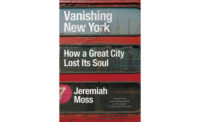Architect Giancarlo Mazzanti’s Biblioteca España [RECORD, November 2008], completed in 2007, is one of the 10 “park-libraries” built as part of the social plan for the city’s most neglected sections. Standing as a powerful symbol of a new cultural era, the building’s three rocklike volumes visually dominate what used to be the most violent and stigmatized part of town. Nearby is Carlos Pardo’s Santo Domingo Savio High School, one of the five proposed schools for low-income sectors. Although not completely finished, due to budget cuts and irregularities in the original financial plan, the school, which overlooks Medellín’s barrios with terraces and promenades, is in operation, contributing to a completely new dynamic for the area.
While many of these projects materialized through local and national competitions held by the city, Empresas Públicas de Medellín (EPM), the area’s most financially powerful enterprise, contributed greatly to their execution. In 1999, they commissioned the first important urban project in Medellín’s financial center: Parque de los Pies Descalzos, or Barefoot Park, by architect Felipe Uribe de Bedout. The 5-acre plaza, with water features and a large esplanade, set a new precedent for the inhabitants of Medellín, or paisa, who had grown accustomed to life behind walls. The park sits adjacent to Uribe’s linear, glass and stone-clad Museum of Science and Technology, and another public plaza for the International Convention Center, completed in 2005, on which Mazzanti collaborated with architects Daniel Bonilla [RECORD Vanguard issue] and Rafael Esguerra. After the success of this first cultural-recreational site, there followed Uribe’s Parque de los Deseos in 2003, also commissioned by EPM and located in the north district of the city. This project took advantage of a large abandoned lot in front of the local planetarium, creating a gathering venue between this building and Uribe’s House of Music, which hosts a variety of events, including free open-air movies projected on the renovated planetarium’s main facade.
With a focus on the city’s commercial center and north district, development continued. In 2004, Uribe’s EPM Library and Parque de la Luz, by architect Juan Manuel Peláez, rose side by side in the financial district. Conceived to symbolize the city’s new spirit, Parque de la Luz exists as a visual counterpoint to the library, a robust, stone-clad structure whose front is defined as an inclined plane of glass that helps draw light and the public into the building. Bedecked with 300 concrete-and-steel masts, which have an average height of 72 feet and are equipped with LEDs, the park changes in mood and appearance throughout the day and the year, according to the position of the sun and the shadows cast. Because of financial constraints, however, the masts are not regularly illuminated, as originally envisioned.
The 2006 renovation of the Botanic Garden in the north district followed the completion of the nearby Parque de los Deseos. Beginning with the complete replacement of the gardens’ boundary walls with a new permeable fence made of black-painted steel-and-wire-mesh panels by architects Lorenzo Castro and Ana E. Velez, this project produced what is now one of the landmarks of the city: the Orquideorama, by architects Felipe Mesa, Alejandro Bernal, J. Paul Restrepo, and Camilo Restrepo. This 45,200-square-foot structure unfolds with a series of 10, 65-foot-tall “flower-trees” made of wood-frame hexagons that shelter the orchid collection below; the hexagonal module repeats in a fractal composition to create a large canopy and provide a protected venue for cultural events. In 2008, Castro completed the circular poured-in-place-concrete entry pavilion that guides visitors around a large reflecting pool at its center as they transition from the street to the garden. Also contributing to the rejuvenation of the north district is Alejandro Echeverri’s Explora Park, completed in 2008. The complex — which comprises four massive, raised, boxlike buildings clad in red aluminum and polyurethane panels that house an interactive museum and a series of open spaces— is separated from the Botanic Garden by a pedestrian walkway and has quickly become a popular destination for the locals. Work continues across the city with a focus on neighborhoods in decline, including master plans for some of these barrios and recently announced competitions for two libraries that will incorporate outdoor public spaces in the north and northwest metropolitan areas.
According to national statistics, in 1991 the number of homicides in Medellín was 381 for every 100,000 inhabitants. By 2005 that number had dropped to 34. The role of strategic city planning and dynamic architecture in this dramatic change is undeniable. By simultaneously looking inward to the needs of the most destitute segments of the population, and outward toward a more globalized vision of design, Medellín is deep in the throes of reinventing itself. By creating spaces that speak to and for the city and its inhabitants and that invite people out from their cloistered or ghettoized lives to connect with the urban environment, Medellín is putting itself on the map once again — this time for something it can be proud of.


